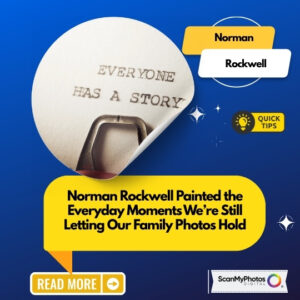Much like photos, your 35mm negatives will not last forever. Do you know how long negatives last? What will you do when they deteriorate? Negative scanning is the quickest and easiest way to preserve those memories for today and tomorrow.
Why is Negative Scanning Important?
The long and short of it, your negatives are your originals. There is no further backup whereas if a photo gets destroyed, you may still have a negative to fall back on for a reprint, assuming you can find it, but if your negatives are damaged or destroyed, that is it, game over.
How Long Do 35mm Negatives Last?
Kodak research has determined that negatives can last up to 1,000 years, however there is a catch to achieving this lofty number. In order to reach this 1,000 year lifespan, Kodak states that negatives need to be constantly stored at 30-32℉ with a relative humidity of 40%. The more realistic number is between 20 and 50 years for most places in the US. Areas with high average annual temperatures, such as Las Vegas or Lake Havasu, as well as those with high annual average relative humidity levels, such as Seattle or Houston, will have shorter film lives than other more moderate areas.
Five Stages of Negative Deterioration
-
- Amber discoloration of the film base. You will see noticeable fading of the image on the negative when you compare it to a good negative.
-
- The film begins to become brittle, often feeling sticky which tends to adhere to negative sleeves or other negatives.
-
- The film becomes extremely brittle and begins showing bubbles in the film. You will also begin to notice a noxious, vinegary odor.
-
- The film reverts and becomes soft again but is extremely sticky, adhering to anything it touches. A much stronger odor is present at this stage.
- The film begins its disintegration into a brown, acrid powder.
If your film begins to exhibit any of these traits, they should be isolated from all of your other negatives due to the autocatalytic nature of film degradation. This means that as the film deteriorates, the by-products of the process accumulate and continue to increase the rate of degradation and will begin to affect other negatives. ScanMyPhotos can help you scan negatives if they are in the first two stages but by stage three, the film has become too fragile to pass through almost any dedicated film scanner.
Old Film is Hazardous to Your Heath
As mentioned above, old deteriorating negatives can emit an unmistakable vinegary smelling gas which can cause eye, skin and lung irritations. In some extreme cases, allergic reactions and lightheadedness have been noted. These tend to be the exception and typically happen with extremely old negatives in a confined space for an extended period of time, but it can happen.
Additionally, nitrate based film can spontaneously combust at temperature as low as 106 F and since the process creates its own oxygen, it can burn even without the presence of air. This sounds frightening, but typically only applies to film created prior to the introduction of safety film in 1923 (hence the name “safety film”) and your typical film has an ignition point of around 800℉ but it is important to know this hazard just in case you have negatives from the turn of the century in your house.
What is the Next Step? Get those Negatives Scanned
The good news is that most 35mm negatives that are stored in your house probably fall within the 20-50 year lifespan of a 35mm negative but if you haven’t looked at them in a while, perhaps it is time to dig them out of whatever closet they are hiding in for inspection. You can then choose to follow Kodak’s suggestion of storing your negatives at 30℉ or you can scan the negatives to a digital format to bring them into the digital age.
Given those two choices, most people are going to choose the negative scanning route rather than storing all of their life’s negatives in the family freezer and luckily ScanMyPhotos can help with your negative scanning project by scanning the negatives at either 2,000 or 4,000 DPI (5MP and 16MP equivalent, respectively).
Scanning negatives also allows for easy online sharing and backup. As noted in our previous blog post, you can upload and backup those photos to sites Facebook, Google+, Flicker or Carbonite. Should you discover you want a new print to hang up in the living room, sites like SnapFish or Shutterfly offer printing services for your digital files.
Scanning your negatives will help preserve your images for future generations, as well as make them easy to share with family and friends. It’s time to dig out those negatives and begin scanning them today.



